
Movies are not cheap to make, so you have to figure out ways to cut corners whenever possible. But you’d think major blockbusters would just delegate everything to massive visual effects teams and call it a day.
But you’d be surprised by how many blockbuster movies use low budget tricks, and we’re here to celebrate that.

2001: A Space Odyssey – The Pen
2001: A Space Odyssey was one of the most expensive films of the 1960s. In order to simulate the changing gravity of various film sets, massive rotating rigs had to be used, which were feats of engineering. In fact, 20th Century Fox wouldn’t build a bigger set until 11 years later when Ridley Scott made Alien.

But one trick in the movie is unbelievably simple. During the sequence where the Pan Am spaceplane takes Dr. Heywood Floyd to a space station, the stewardess grabs a pen out of the air, floating in zero gravity, and puts it back in Floyd’s pocket.
So, how’s the pen floating?

A thin sheet of glass. Seriously, that’s it. They used double-sided tape, and taped the pen to a thin piece of glass, invisible due to the lighting.
What’s hilarious about the simplicity of this method was how long it took to come up with it. Kubrick and technicians worked for months to figure out the best way to do the shot.
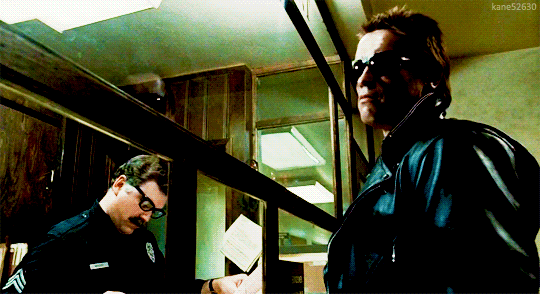
The Terminator – Arm Surgery
To be fair, The Terminator is much lower in budget than it looks (you can read more about that here). The film was constantly shot without permits, and James Cameron entered the film industry as a technician on low budget Roger Corman movies. (Hell, Cameron’s methods could have been its own post.)
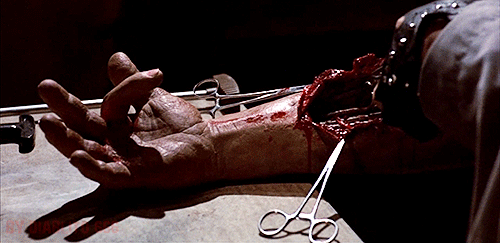
But during the arm surgery scene when the Terminator repairs itself, the fingers twitch and move. You might assume it’s an animatronic, but it’s even lower budget than that.
A small woman crew member was crouched under the table, and she stuck her hand inside of the fake hand on the table, twitching the fingers occasionally. Why spend money on animatronics when you can just do that?

The Dark Knight – How about a magic trick?
I cannot begin to describe how hard the audience I was with laughed at the “magic trick” scene in The Dark Knight when I saw it on opening night. Now, you’d assume the way they did the scene is simple:
Just CGI a fake pencil on the table, slam the stunt man’s head into nothing and call it a day.

Except Christoper Nolan is obsessed with practical effects, and the way they shot it is a bit more complicated. It’s actually two shots spliced together in the edit. The first shot is the stunt man being shoved down at the table with a pencil on it. The second shot spliced is a table with no pencil for the full slam down.
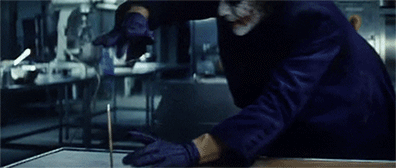
Now, if you’re wondering “Wait, how the fuck did the first shot work?” it meant that the stuntman would have to clear the pencil out from under his face as he was going down to prevent it from going into his head. If you want more information on how the scene was shot, check out this article from Vulture (they interviewed everyone involved with the scene, and it’s pretty hilarious).

Lord of the Rings: Return of the King – Pippin is cast out
Peter Jackson, just like James Cameron, came up as a B-movie filmmaker, so it’s no surprise that the whole trilogy is FILLED with low budget tricks. Specifically, all sorts of techniques were used to make the Hobbits look smaller than the humans. The techniques ranged from little person body doubles wearing life masks, to forced perspective, to green screen, and more.
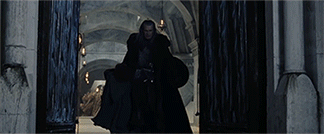
But the way this shot was achieved is so simple, it’s almost stupid. When Denethor tosses Pippin out, what you’re seeing is a little person actor wearing a life mask, performing a stunt where he rolls down the step.
So, how does he suddenly become Billy Boyd, the actor for Pippin, at the bottom of the steps? A CGI splice? A clever edit? No, it’s a single shot, and again, it’s ridiculously simple.
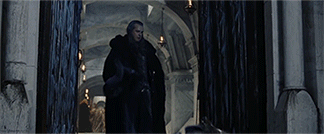
Billy Boyd is laying in front of the camera, already at the bottom of the steps, just out of frame. When the double rolls into him, Billy Body would suddenly pop up into the bottom of the frame, as if he’d just finished tumbling forward.
It’s that simple, and it’s totally seamless.
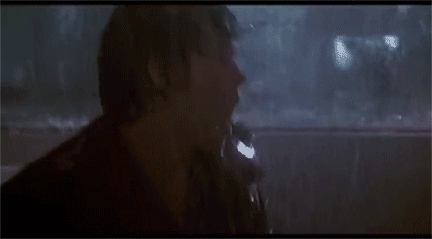
Aliens – The Facehugger Jump
And, we’re ending on another James Cameron entry, this time in the decidedly high budget Aliens.
In order to achieve the scene where Ripley and Newt are attacked by facehuggers, several puppets had to be built for each individual shot for each action. But how does the facehugger perfectly jump onto the downed table, and then jump right at the camera?
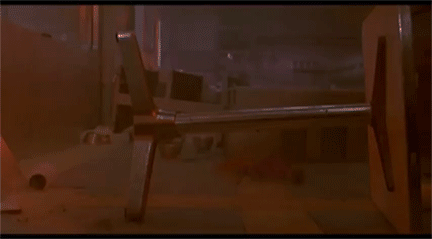
This one is complicated, but low budget in its genius. What you’re looking at is actually two shots spliced together. (GIFs have been slowed down for clarity, in fact, slowing it down makes it pretty clear where the quick edit is.)
For this to work, the facehugger’s legs are always positioned the exact same way on the table column for continuity. The first shot is actually footage in reverse. In order to make it look like it’s jumping, they set up the puppet, and yanked it backwards with a cable. This is what it actually looked like without being reversed:
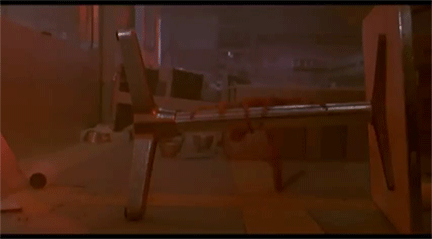
So far so good?
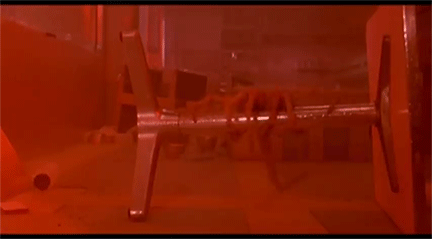
The second shot is much easier. They positioned the facehugger puppet on the table column again, except this time they yank it forward with a cable into the camera. Splice the shots together after reversing the first shot, and it looks like a living breathing creature is suddenly leaping at our hero.
It’s fucking brilliant in its simplicity, once you figure out how to do it.
 Barnorama All Fun In The Barn
Barnorama All Fun In The Barn